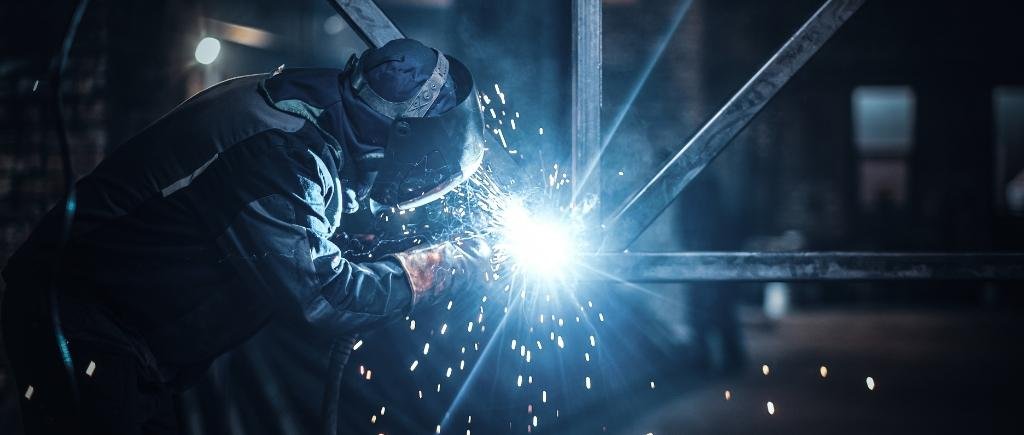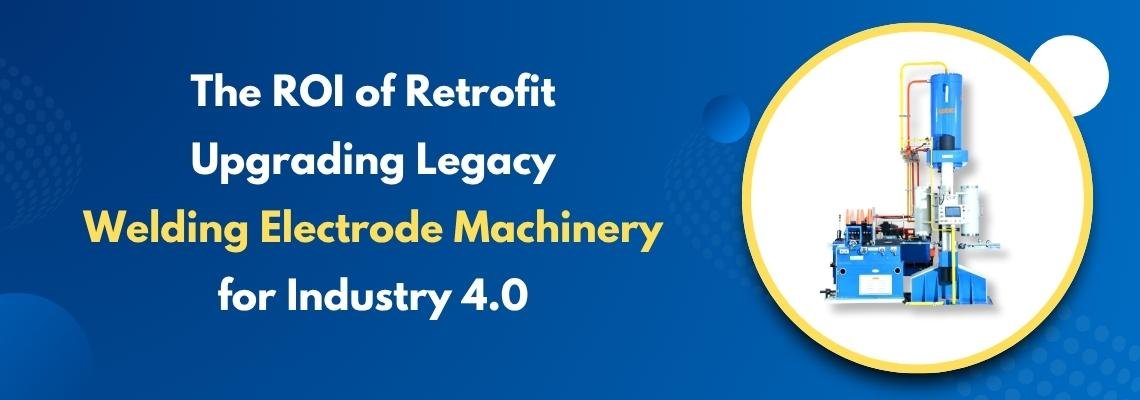Welding electrode machine retrofit ROI starts with understanding how upgrading old gear can transform your shop into a smarter workspace. Many factories still run machines that have been humming for decades without digital controls. These units may weld just fine, but they lack the sensors and connections that let you see what’s happening in real time. By fitting modern controllers, data links, and monitoring software, your legacy welding machines join the network of Industry 4.0, telling you when parts wear out, how much energy they use, and how each weld performs.
What Makes Retrofit Worth It
Keeping a machine until it breaks may feel like saving money, but hidden costs add up quickly. When a machine stops without warning, the time spent finding a technician, waiting for spare parts, and restarting the line can cost as much as fitting new electronics. Older motors often run at full power even when they don’t need to, eating up electricity. Without data on weld quality, you end up with extra scrap or rework that erodes your profits. A retrofit plugs those gaps. Sensors track temperature and current flow, so you catch wear before it causes a breakdown. Smart drives adjust motor speed to match each task, cutting your power bills. And weld data gives you a clear record of quality, which means fewer defects and happier customers.
How Digital Controls Improve Performance
When you add digital controls, each machine becomes more than a welder. The new controller gathers signals from sensors, watches for patterns that signal trouble, and shares data with your planning system. Instead of guessing when to replace a part, you schedule maintenance exactly when it’s needed. This shift from emergency fixes to planned work slashes downtime. At the same time, you gain the ability to tune weld settings on the fly. If one batch of electrodes responds differently, the system notes it and tweaks current or speed automatically. That means consistent welds and less scrap. Over time, you learn from the data. You spot which settings give the best results and build that know-how into your routines.
Calculating Return on Investment
To see if retrofit makes sense, compare the cost of upgrade kits, installation, and staff training against your annual savings. Savings come from avoided breakdowns, fewer scrap parts, lower energy use, and shorter setup times. Imagine your shop spends an average of two hours each month fixing a worn part. By fitting sensors that alert you days before failure, you cut that emergency repair down to a quick check during planned downtime. If electricity bills drop because variable-speed drives match power use to each load, those savings flow directly to your bottom line. When you add better weld consistency and less scrap, the combined gains often repay the retrofit cost in under two years.
Turning Theory Into Reality

A mid-size workshop serving automotive suppliers invested in retrofitting three welding lines. They added modern motor drives, a central dashboard for monitoring, and training for operators on the new system. In the first year, unplanned stops fell by nearly half, and energy use dropped enough to cut annual electricity costs by over ten percent. Weld defects declined, so scrap rates fell and delivery times improved. By the end of year two, the retrofit cost was fully recovered. From that point on, every extra dollar saved boosted profits.
Smooth Transition Without Disruption
Many worry that upgrading an old machine means long production halts. In practice, retrofit modules and plug-and-play wiring allow most machines to be updated during a single maintenance shift. Suppliers often send technicians who know how to swap components without rewiring the whole system. Meanwhile, staff learn new dashboards through short hands-on sessions. Operators appreciate watching data flow and understanding what a rise in temperature or a spike in current really means. When they see problems flagged early, they gain confidence in the new tools and use them to keep lines running smoothly.
Overcoming Resistance to Change
Change can feel risky, especially when machines you rely on suddenly seem different. The key is involving operators from the start. Show them how the retrofit system sends alerts and displays performance at a glance. Let them compare old weld records with the new data-rich reports. When they see how easy it is to catch a worn part before it fails, they become advocates for the upgrade. Management support is crucial too; clear goals for energy savings and quality gains help everyone focus on the benefits instead of fearing the unknown.
Upgrading legacy welding electrode machines brings them into the digital age, cutting downtime, lowering energy use, and boosting weld quality. You recover retrofit costs faster than you might expect, often in under two years. As you see fewer defects and smoother operations, every saved dollar strengthens your bottom line.







**mind vault**
mind vault is a premium cognitive support formula created for adults 45+. It’s thoughtfully designed to help maintain clear thinking
**sugarmute**
sugarmute is a science-guided nutritional supplement created to help maintain balanced blood sugar while supporting steady energy and mental clarity.
**glpro**
glpro is a natural dietary supplement designed to promote balanced blood sugar levels and curb sugar cravings.
**prostadine**
prostadine is a next-generation prostate support formula designed to help maintain, restore, and enhance optimal male prostate performance.
**vittaburn**
vittaburn is a liquid dietary supplement formulated to support healthy weight reduction by increasing metabolic rate, reducing hunger, and promoting fat loss.
**prodentim**
prodentim an advanced probiotic formulation designed to support exceptional oral hygiene while fortifying teeth and gums.
**glucore**
glucore is a nutritional supplement that is given to patients daily to assist in maintaining healthy blood sugar and metabolic rates.
**synaptigen**
synaptigen is a next-generation brain support supplement that blends natural nootropics, adaptogens
**nitric boost**
nitric boost is a dietary formula crafted to enhance vitality and promote overall well-being.
**mitolyn**
mitolyn a nature-inspired supplement crafted to elevate metabolic activity and support sustainable weight management.
**wildgut**
wildgutis a precision-crafted nutritional blend designed to nurture your dog’s digestive tract.
**zencortex**
zencortex contains only the natural ingredients that are effective in supporting incredible hearing naturally.
**yusleep**
yusleep is a gentle, nano-enhanced nightly blend designed to help you drift off quickly, stay asleep longer, and wake feeling clear.
**breathe**
breathe is a plant-powered tincture crafted to promote lung performance and enhance your breathing quality.
**pineal xt**
pinealxt is a revolutionary supplement that promotes proper pineal gland function and energy levels to support healthy body function.
**energeia**
energeia is the first and only recipe that targets the root cause of stubborn belly fat and Deadly visceral fat.
**prostabliss**
prostabliss is a carefully developed dietary formula aimed at nurturing prostate vitality and improving urinary comfort.
**boostaro**
boostaro is a specially crafted dietary supplement for men who want to elevate their overall health and vitality.
**potentstream**
potentstream is engineered to promote prostate well-being by counteracting the residue that can build up from hard-water minerals within the urinary tract.
**hepato burn**
hepato burn is a premium nutritional formula designed to enhance liver function, boost metabolism, and support natural fat breakdown.
**hepatoburn**
hepatoburn is a potent, plant-based formula created to promote optimal liver performance and naturally stimulate fat-burning mechanisms.
**flow force max**
flow force max delivers a forward-thinking, plant-focused way to support prostate health—while also helping maintain everyday energy, libido, and overall vitality.
**prodentim**
prodentim is a forward-thinking oral wellness blend crafted to nurture and maintain a balanced mouth microbiome.
**cellufend**
cellufend is a natural supplement developed to support balanced blood sugar levels through a blend of botanical extracts and essential nutrients.
**revitag**
revitag is a daily skin-support formula created to promote a healthy complexion and visibly diminish the appearance of skin tags.
**neuro genica**
neuro genica is a dietary supplement formulated to support nerve health and ease discomfort associated with neuropathy.
**sleeplean**
sleeplean is a US-trusted, naturally focused nighttime support formula that helps your body burn fat while you rest.